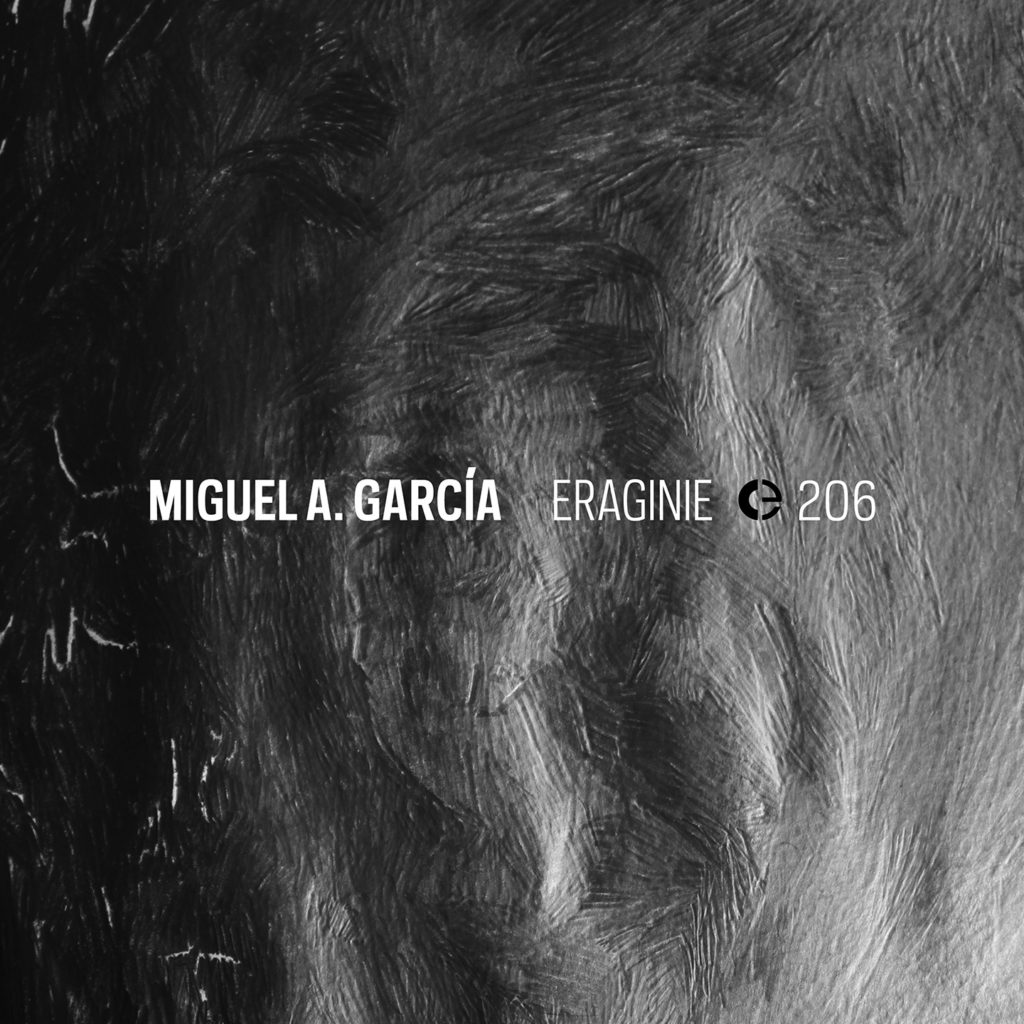
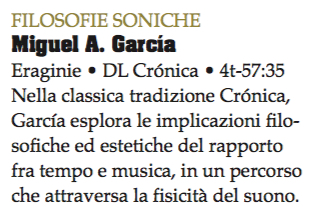
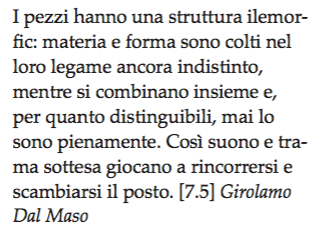
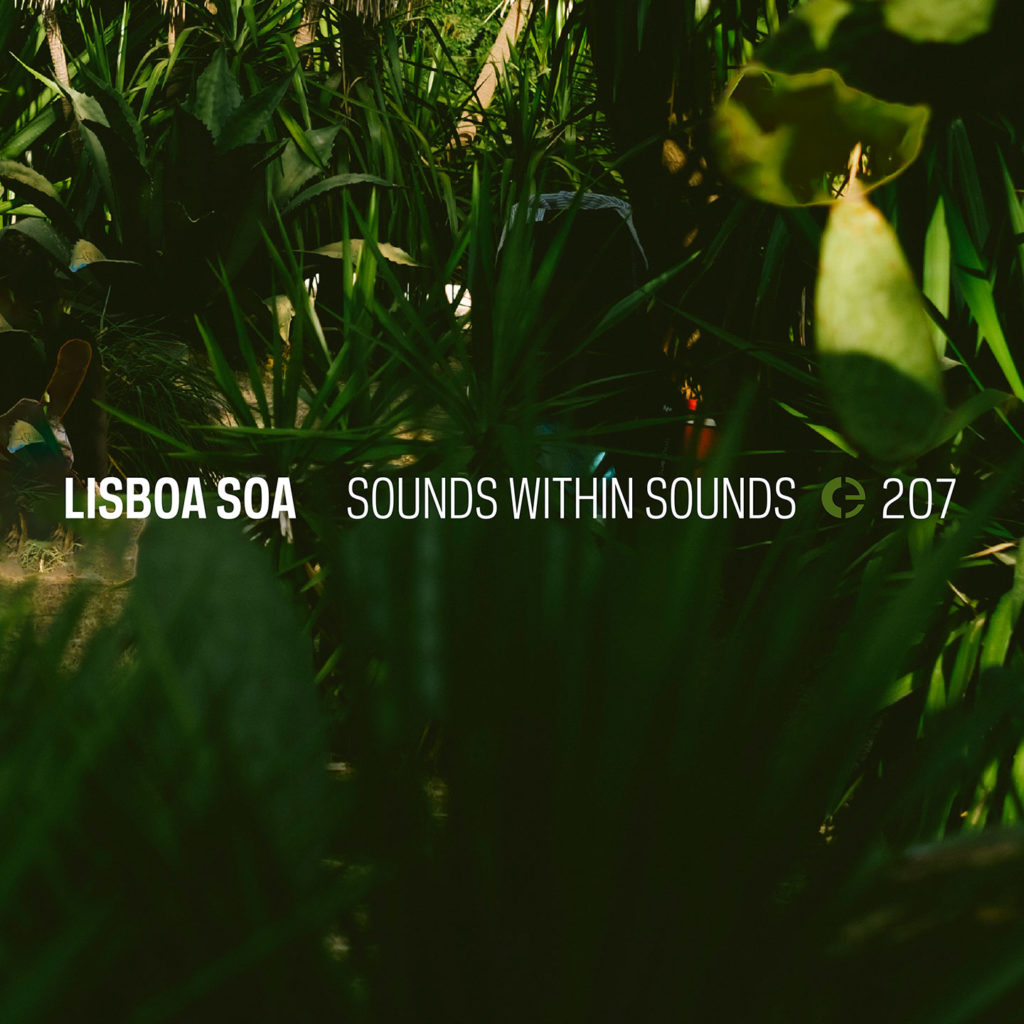
Defining itself as a festival of sound art, ecology and auditory culture, Lisboa Soa seeks to value contemporary artistic creation, but assigning it a social and ecological context, of direct intervention in space, encouraging the participation of different audiences through installations and sound performances, auditory education workshops, debates, lectures and tours focused on the sense of hearing. The purpose of Lisboa Soa is to encourage listening to better understand the place we occupy, and to raise awareness of the impact of human presence on the planet.
Acoustic ecology, the discipline that inspired the festival since its foundation, places listening at the centre, and this is also the focus of Lisboa Soa: to shift attention to the ears and to create conditions, spatial and temporal, that are conducive to the act of listening attentively. One of the main goals of Lisboa Soa is to bring the audience to iconic spaces and create auditory experiences that guide visitors through these spaces, while at the same time provoking a reflection on the involvement of human beings with the environment, with others, with the city and how it all connects through sound.
In 2021, after five editions — one of them particularly intense, during a year of pandemic and restrictions — Lisboa Soa decided to “listen backwards”, commissioning four compositions to four Portuguese artists, who delved into the festival’s sound archive to create new interpretations and meanings from it. This album is created from these compositions: it is a work about memory, with an ear to the future.
Raquel Castro
João Castro Pinto started his activity as a composer and performer of experimental music and as a sound and intermedia artist in the second half of the 1990s. His production comprehends the domains of soundscape composition, live electronics improv, electroacoustic and acousmatic music and radio art. He graduated in Philosophy from Universidade Nova de Lisboa, and is currently completing his PhD, on the composition of soundscapes, at the Portuguese Catholic University. agnosia.me
Efflux was composed through the sound exploration of the selected samples, favouring contrasting approaches. Some sounds were extremely processed, until they became unrecognisable, others were filtered and isolated from their environmental context, however, maintaining some of their spectromorphological profile, and, finally, sounds from concordant and discordant sound families were added. Efflux presents a varied sonic flow of frequencies, amplitude dynamics, between quasi-silence and dense volume, discrete and continuous sounds.
Sara Pinheiro is a sound designer for cinema and video art, acousmatic composition and multi-channel live performance. She graduated in Sound for Cinema at the School for Theatre and Cinema in Lisbon, and in Sonology at the Institute of Sonology at the Royal Conservatory of The Hague. Her PhD, at the School of Music at Bangor University, crosses the areas of Concrete Music with sound design for cinema. She currently resides in Prague where she works as a sound designer and cultural agent, both as a member of the live coding group k-o-l-e-k-t-i-v and the “REGARDLESS” manifesto.
Do que Ressoa looks for the spaces of the meantime, the arrivals and departures before and after concerts/installations, the wait, the oscillation, the resonance of intermediate moments as in a temporal suspension of a memory that I do not have.
Mestre André works as a field-recordist, performer, composer and sound artist for film, dance, performance and theatre. He has composed electro-acoustic sound work for multi-channel systems under the alias O Morto, improvised electronic music as Alacrau and produced beats as Notwan. He works with the bands Jibóia and Banha da Cobra. André is a beekeeper involved in the ecological thinking of aesthetics in natural contexts, his work reflects on an ecological thinking of creative practice and aesthetic relationships within natural human and nonhuman contexts. Within this subject, he recently published the article “Towards a Rewilding of the Ear” in the Organized Sound journal and has been developing the installation series Dwelling Poetics of Dystopia.
No Earlids is the (de)compositional result of sounds from various editions of Lisboa Sounds through the ears that recorded them. The de-composition process was entrusted to intuition in choosing moments from among dozens of hours of recording with the aid of the memory of the moments themselves. Not only intentional moments but also “backstage” moments, in an indiscriminate listening, without blinking.
Ana Guedes lives and works between Portugal and the Netherlands. Her artistic practice explores the plasticity of sound in formats such as performance and installation, interconnecting temporalities and narratives, archival notions, historical, social and political perspectives. Ana Guedes attended the Calouste Gulbenkian Music Conservatory in Braga, graduated in Sculpture from the Faculty of Fine Arts of the University of Porto, obtained a Masters in Artistic Research from the Royal Academy of Art and the Royal Conservatory of The Hague, in the Netherlands.
Splicingarchives integrates fragments of Lisboa Soa’s archive of sound performances. Performances from different editions of the festival are referenced, coexisting as fragments of different filtered voices, processed using analogue tape loops, synthesisers and pipe organ, recorded in the analogue music laboratories Willem Twee Studios in The Netherlands. Jen Reimer & Max Stein (2017), Tomoko Sauvage (2018), Santa Melódica Orchestra (2019), Ana Guedes & Lisboa Soa archives, organ+ tape loops + synth (2021-2023).
“Lisboa Soa, Sounds Within Sounds” is now available as a limited-release CD, download, or stream from Crónica.

Crónica bringen Ende des Monats eine CD mit vier Tracks heraus, die das portugiesische Festival Lisboa Soa in den Jahren von 2016 – 2020 dokumentieren. Vertreten sind Ana Guedes, João Castro Pinto, Mestre André und Sara Pinheiro – vier Vertreterinnen und Vertreter der einheimischen Experimentalszene, die als Komponisten, Soundesigner- und Performer in verschiedenen Kontexten aktiv sind und mit ganz unterschiedlichen Klangmaterialien arbeiten.
Die vorliegenden Arbeiten basieren auf Mitschnitten aus den Archiven des Festivals. Diese wurden 2021, als pandemiebedingt erstmals kein Festival abgehalten werden konnte, einer gründlichen Revision und Neuinterpretation unterzogen und in die hier zu hörenden Formen gebracht. Mit seinen den Raum bewusst einbeziehenden Performances, Workshops und zum Teil environmentartigen Installationen gibt Lisboa Soa den künstlerischen Arbeiten eine räumliche und damit zusammenhängend auch soziale und ökologische Dimension. Dies betont auch die Kuratorin Raquel Castro, die auch als Herausgeberin der Compilation fungiert, in ihren Liner Notes: “The purpose of Lisboa Soa is to encourage listening to better understand the place we occupy, and to raise awareness of the impact of human presence on the planet. Acoustic ecology, the discipline that inspired the festival since its foundation, places listening at the centre, and this is also the focus of Lisboa Soa: to shift attention to the ears and to create conditions, spatial and temporal, that are conducive to the act of listening attentively. One of the main goals of Lisboa Soa is to bring the audience to iconic spaces and create auditory experiences that guide visitors through these spaces, while at the same time provoking a reflection on the involvement of human beings with the environment, with others, with the city and how it all connects through sound.
In 2021, after five editions — one of them particularly intense, during a year of pandemic and restrictions — Lisboa Soa decided to “listen backwards”, commissioning four compositions to four Portuguese artists, who delved into the festival’s sound archive to create new interpretations and meanings from it. This album is created from these compositions: it is a work about memory, with an ear to the future”. Neben der CD ist “Lisboa Soa, Sounds Within Sounds” auch zum Download erhältlich.
via African Paper

A festival of sound art, ecology and auditory culture. That’s how Lisboa Soa is described, and they have been going since 2016. To commemorate the first lustrum, they opened their archives to four Portuguese musicians and had them create new works from works collected. The festival is about “acoustic ecology, the discipline that inspired the festival since its foundation, places listening at the centre, and this is also the focus of Lisboa Soa: to shift attention to the ears and to create conditions, spatial and temporal, that are conducive to the act of listening attentively. One of the main goals of Lisboa Soa is to bring the audience to iconic spaces and create auditory experiences that guide visitors through these spaces while at the same time provoking a reflection on the involvement of human beings with the environment, with others, with the city
and how it all connects through sound”, so in that sense, it is a good idea to create new connections and new spaces. Of these four, I only heard of João Castro Pinto but not Sara Pinheiro, Meste André and Ana Guedes. These four composers have four different approaches. At the start, Pinto uses highly varied sounds from the works, processes these heavily and uses silence quite a bit, in powerful contrast to other sounds he uses. Pinheiro concentrates on the actions in between, before and after a concert, the auditorium and everybody waiting. There is no emphasis on the dynamics within the sound, but minor differences exist in the sounds of empty spaces. André’s approach is ‘What do I like that much that I want to use it?’, sounds from the concerts and behind the scenes (which made me think, what is archived here, and how much?). His piece is quite the traditional musique concrète approach, working with granulating sound, collage-like and most enjoyable throughout. It is also the one piece that uses recognizable musical instruments: lots of percussion and some trumpet. Each piece is longer than the previous, but from the fourteen of André, it is a leap to the twenty-five of Guedes. She uses the archive but adds recordings from other places, such as Willem Twee Studios in The Netherlands. It is a long piece, but there are very beautifully arranged atmospheric sounds here, at times almost drone-like. (FdW)
via Vital Weekly

Crónica veröffentlichen dieser Tage einnen neuen Longplayer des baskischen Komponisten und Soundartist Miguel A. García mit vier ausladenden Tracks, basierend auf Field Recordings und anderem klanglichen Rohmaterial, bei denen eine Reihe weiterer Personen – Pedro A. Mirones, Maite Mugerza (von der auch die im Artwork verwendeten Zeichnungen stammen), Garazi Navas, Schahram Poursoudmand, Alex Reviriego, Jeff Surak – ihren Teil beigesteuert haben. In seinem Begleittext geht Fernando Ulzión auf die Abkehr des Musikers von einer lange gepflegten Lofi-Ästhetik ein und kommt auf die Verschiedenartigkeit im Bau der feinsinnig gestalteten Stücke zu sprechen: “In the stillness we touch the eternal? With this new edition, Miguel A. García definitively abandons the low fidelity of his early work to give detritus, error and acoustic waste a luxury treatment that is recommended to be heard in good equipment. Just as before we heard their disturbing worlds from afar, we intuited them, now we are in there, we are the very central nucleus; we are part of it. What used to come from outside now comes from within. The remnants of light are brighter than ever.
The most blinding darkness. Quite simply: the first piece begins with the sounds of a field recording of a hypothetical space junk video game that, in an alien environment, organizes itself into a musical symphony, takes shape and organizes itself according to a logic of elusive masses. The following theme shares with the first the lack of a marked regular rhythm, but instead they do have their tempo, their internal rhythm, their cadence based on micro-rhythms and sequences and frequencies, which make them not static but enormously dynamic. A liquid, mercurial nature (cold, but a good electrical conductor); constantly changing; an apparently imperceptible but profound metamorphosis. On the other hand, the third theme opens with a mixture of the most unusual rhythms, a bizarre dance session in crescendo; psycho-electroacoustic dance. To close the cycle, the fourth piece brings us the melody seen through a hundred thousand veils, as sensual and seductive as elusive and painful. The dissolution of all that is solid, the eternal and unstoppable dissolution of matter and its return to nothing”. García, der auch unter dem Namen Xedh aktiv ist, hat in den letzten gut anderthalb Jahrzehnten eine Vielzahl an Aufnahmen in den unterschiedlichsten Formaten herausgebracht, neben Soloarbeiten umfasst dies auch Kollaborationen und Bands. “Eraginie” erscheint am 5. September auf CD und zum Download.
via African Paper

“A quartet of artists converge on the Lisboa Soa festival to delve deeper into aspects of sound. Lisboa Soa, Sounds Within Sounds ranges from field recording to drone to improvisation, often within a single track (Cronica, September 26).”
via A Closer Listen

In the stillness we touch the eternal?
With this new edition, Miguel A. García definitively abandons the low fidelity of his early work to give detritus, error and acoustic waste a luxury treatment that is recommended to be heard in good equipment. Just as before we heard their disturbing worlds from afar, we intuited them, now we are in there, we are the very central nucleus; we are part of it. What used to come from outside now comes from within. The remnants of light are brighter than ever. The most blinding darkness.
Quite simply: the first piece begins with the sounds of a field recording of a hypothetical space junk video game that, in an alien environment, organizes itself into a musical symphony, takes shape and organizes itself according to a logic of elusive masses .
The following theme shares with the first the lack of a marked regular rhythm, but instead they do have their tempo, their internal rhythm, their cadence based on micro-rhythms and sequences and frequencies, which make them not static but enormously dynamic. A liquid, mercurial nature (cold, but a good electrical conductor); constantly changing; an apparently imperceptible but profound metamorphosis.
On the other hand, the third theme opens with a mixture of the most unusual rhythms, a bizarre dance session in crescendo; psycho-electroacoustic dance. To close the cycle, the fourth piece brings us the melody seen through a hundred thousand veils, as sensual and seductive as elusive and painful.
The dissolution of all that is solid, the eternal and unstoppable dissolution of matter and its return to nothing.
Fernando Ulzión
Miguel A. García, also known as Xedh, is an artist resident in Bilbao who works on the field of experimental music and sound art. Trained in Fine Arts, he works on electroacoustic composition and improvisation, using sources obtained from the manipulation of electrical devices, sometimes mixing these with sounds of acoustic instruments and field recordings.
Both solo and in different groups, he has performed extensively in Europe, America and Asia. He has collaborated with many artists, both in studio and live, such as, among others: Alfredo Costa Monteiro, Ilia Belorukov, Francisco López, Francisco Meirino, Seijiro Murayama or Jean-Luc Guionnet. His work appears in more than a hundred albums with labels, such as Bestiarie, Crónica Electrónica, Cyclic Law, In Solace Publishing, Intonema, Malignant, Mikroton, Moving Furniture, Pure Reactive, Sentient Ruin, Slaughter Recs, etc.
At the same time, he works as event organizer and curator. He is the founder of Le Larraskito Club (Bilbao), the director of the Zarata Fest (strange/unusual music festival) and part of the organization of the Hotsetan cycle in Azkuna Zentroa (Bilbao), all of them platforms for the dissemination of different, odd and risky music and related disciplines.
Eraginie is now available as a limited-edition CD, download or stream from Crónica.

Miguel A. García launches Eraginie with the sounds of “a hypothetical space junk video game,” and then proceeds to find awe in detritus and debris (Crónica, September 5). via A Closer Listen’s Fall Music Preview.

Roel Meekop, come ogni artista sensibile, si fa molte domande sull’utilità della propria attività, sulla sua capacità di incidere nella realtà. Il suo restare inerme, di fronte alla guerra, è lo stesso del pittore minimalista Ad Reinhardt, che negli anni ’60 cercò un astrattismo geometrico, del tutto separato dai sentimenti personali. Puro colore, forma e razionalità. Reinhardt creò una cartolina con scritte contro la guerra, e anche contro la presenza della guerra nell’arte, per ribadire l’estraneità dalla realtà delle proprie opere. Meekop si è ispirato quasi per contrasto a Reinhardt, in quanto il fatto stesso che un’opera d’arte comunichi di volersi emancipare dal parlare di guerra, si contraddice perché la nomina, dunque si lega ad essa.
Roel Meekop, classe 1963, prima di manipolare il suono, ha studiato arti visive in Olanda, a Rotterdam. La musica è arrivata in un secondo momento, ed è indubbiamente legata a concetti visual. Nell’album “Viva in pace”, uscito per la portoghese Crónica Records, la ricerca sul suono è indirizzata da queste riflessioni sulla consapevolezza di non poter fare nulla contro la guerra, ma anche di cercare di rendere astratta la propria creazione musicale.
Afferma di avere paura del pensiero radicale di Reinhardt, perché, dice, se l’arte arriva davvero ad un punto definitivo, dopo averlo raggiunto che si fa? Si smette di creare, perché si è giunti alla fine dell’arte? Quindi, in “Viva in pace”, per quanto il suono sia elaborato nella sua forma d’onda, senza riferimenti extramusicali, Meekop ha tenuto i propri sentimenti come spunto di partenza. Poi non so se, senza averlo saputo dalle sue dichiarazioni, noi avremmo potuto ravvisare tali sentimenti, in questi suoni cangianti.
L’album è suddiviso in quattro tracce. Nella prima, possiamo notare un estremo “pampottaggio” (da pan pot), cioè il suono che dapprima si sposta tutto sulla sinistra (si nota soprattutto con le cuffie), poi tutto sulla destra, per un bel po’ di secondi. Gradualmente, il passaggio nelle orecchie si fa sempre più repentino, come un motore. Nella seconda traccia, ascoltiamo più rumori attorno allo stesso suono di base, che si fa sempre più levigato e luminescente, come una superficie che fa scintille tramite un saldatore.
“Viva in pace III”, il terzo capitolo, è scandito all’inizio dalle lancette di un orologio a muro. Così, facciamo caso ai secondi che scorrono. Accanto alla loro regolarità, si aggiungono gradualmente sempre più rumori irregolari, schiocchi di plastica, legni, disturbi bassi come vibrazioni di vecchie caldaie. A un certo punto, le lancette svaniscono, lasciandoci soli con gli impulsi elettronici, via via sempre più spigolosi.
Queste prime tre tracce durano rispettivamente 15, 13 e 10 minuti circa. L’ultima invece dura 4’49”, ed è fatta con polveri di rumore per i primi tre, per poi passare ad un lontano e suggestivo scampanellio, un loop di campane sempre più deformato dalla “corruzione” elettronica del suono. In chiusura, riconosciamo il verso di una tortora.
Il processo è freddo; il che, va specificato, non è un male. La freddezza è un antidoto all’estrema espressività, che se per alcuni può essere catartica e purificatrice, per altri può essere ulteriore fonte di stress. Come quando sei triste, e ti ascolti canzoni tristi sperando di sfogarti, e invece poi sei più triste di prima. L’astrattismo astrae, ti sottrae. E se non possiamo attivamente agire contro il male, possiamo almeno non sostenerlo, sottrarci. (Gilberto Ongaro)
via Music Map
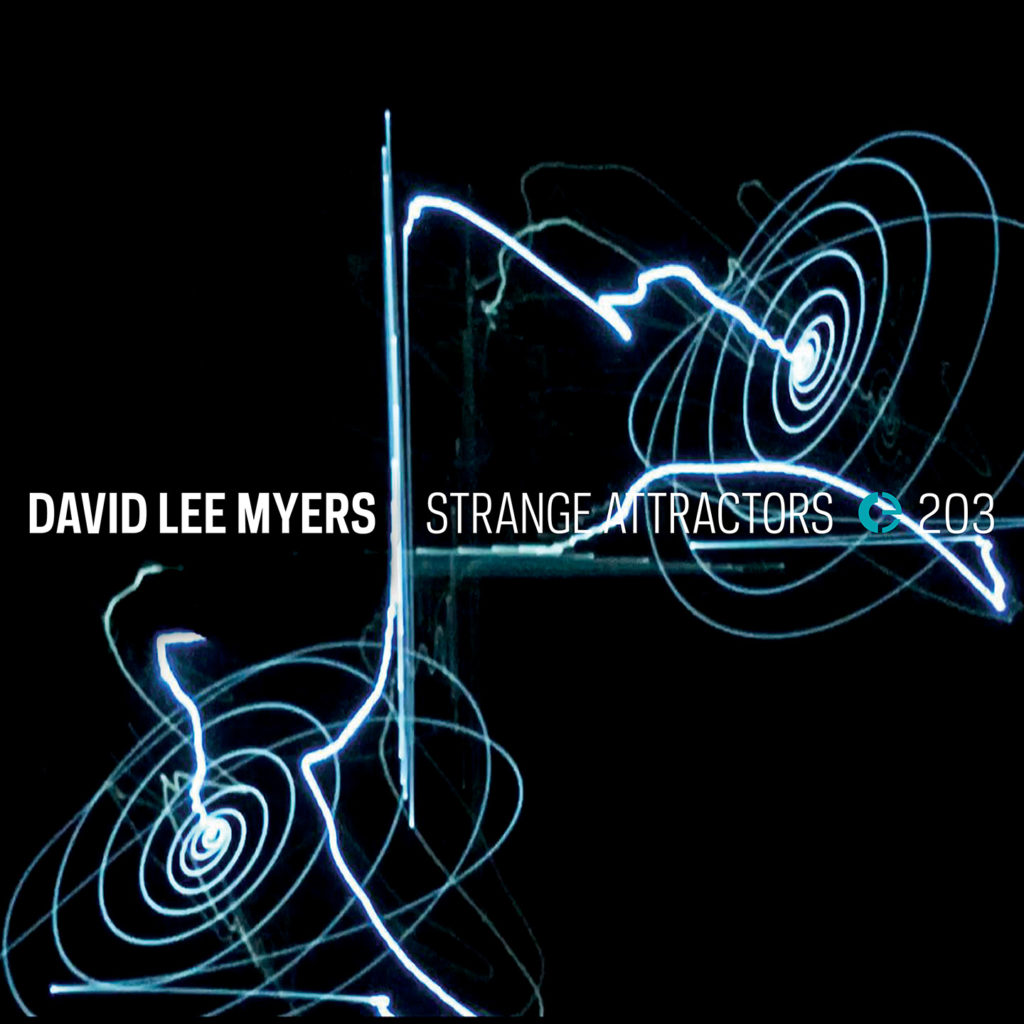
Alcuni concetti sono ricorrenti perché affascinano numerosi artisti. David Lee Myers ne riapre uno spesso frequentato di recente, grazie alle continue conferme dalla fisica quantistica: il tempo non esiste. Noi siamo organismi che crescono e cambiano, in un prima e in un dopo. Ma quello che misuriamo è un continuum. Giorno e notte li consideriamo perché siamo sulla Terra, ma in realtà il tempo come forza è lineare, siamo in un eterno presente.
Ecco perché l’artista newyorchese, in “Strange attractors” (uscito per Crónica Records), crea esperienze sonore dove i suoni sono dilatati, e privi di una ritmica. Perché la ritmica ci scandirebbe un tempo, la percezione da cui egli vuole emanciparci. Artista visual e del suono, Myers dice che questa musica è un meccanismo di “rimozione del tempo”. Coi suoi lunghi suoni lentamente cangianti nei brani “Equability of powers”, “Iniquities”, “With perfect clarity” e “Yet another shore”, David Lee ci fa concentrare sul qui e ora.
Quando un suono viene così prolungato, si finisce per notarne i dettagli più piccoli. Hai mai dovuto ascoltare un allarme per tanto tempo? Se all’inizio sembra di sentire un’onda che sale e che scende, dopo un po’ ti accorgi che sono due o tre singoli suoni, alternati rapidamente, che danno l’illusione del movimento rotondo. Questo accade anche ascoltando le oscillazioni di questi suoni, evidenziando forse quegli “strani attrattori” tra le frequenze.
Le impressioni possono essere diverse, a seconda dell’esperienza che uno ha avuto, nel sentire suoni simili. Ad esempio, “With perfect clarity”, a me ricorda a tratti un macchinario industriale, a tratti il suono del monoscopio della Rai… Mentre “Yet another shore” sembra un aereo appena passato, il cui suono arriva in ritardo, però qui si fa via via più cristallino e rilucente.
David Lee Myers consiglia di ascoltare “Strange attractors” di notte, ed effettivamente confermo, anche se io sto scrivendo alle 13.17, con gli spaghetti al ragù davanti! A seconda della condizione in cui ti trovi, questo disco ti darà vibrazioni diverse. Ma di sicuro la notte è l’ideale, quando la coscienza è più attiva. (Gilberto Ongaro)
via Music Map